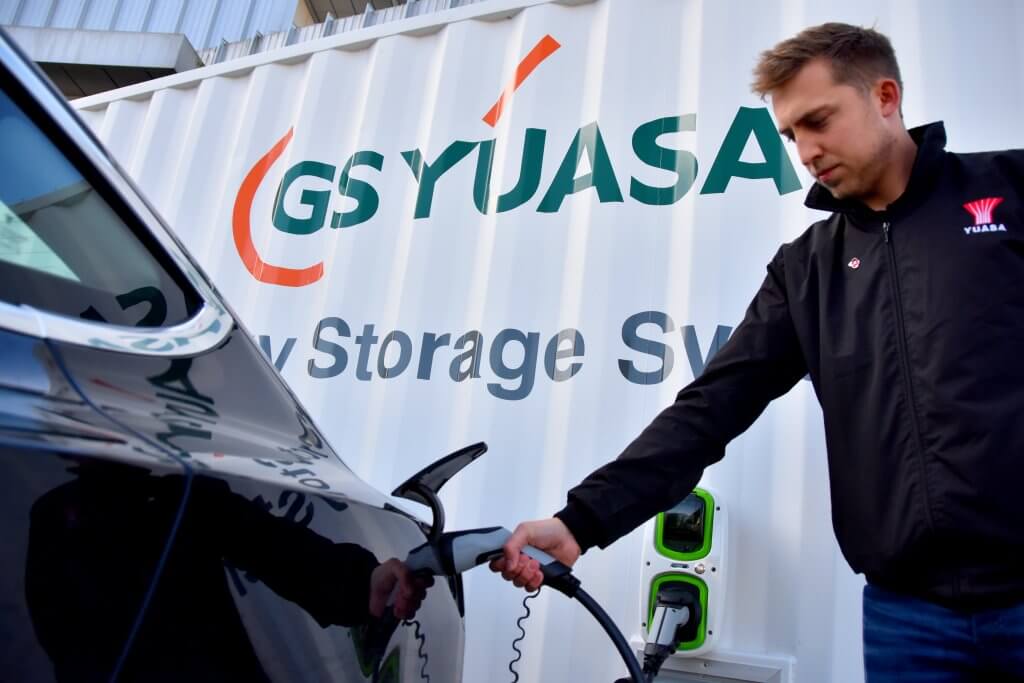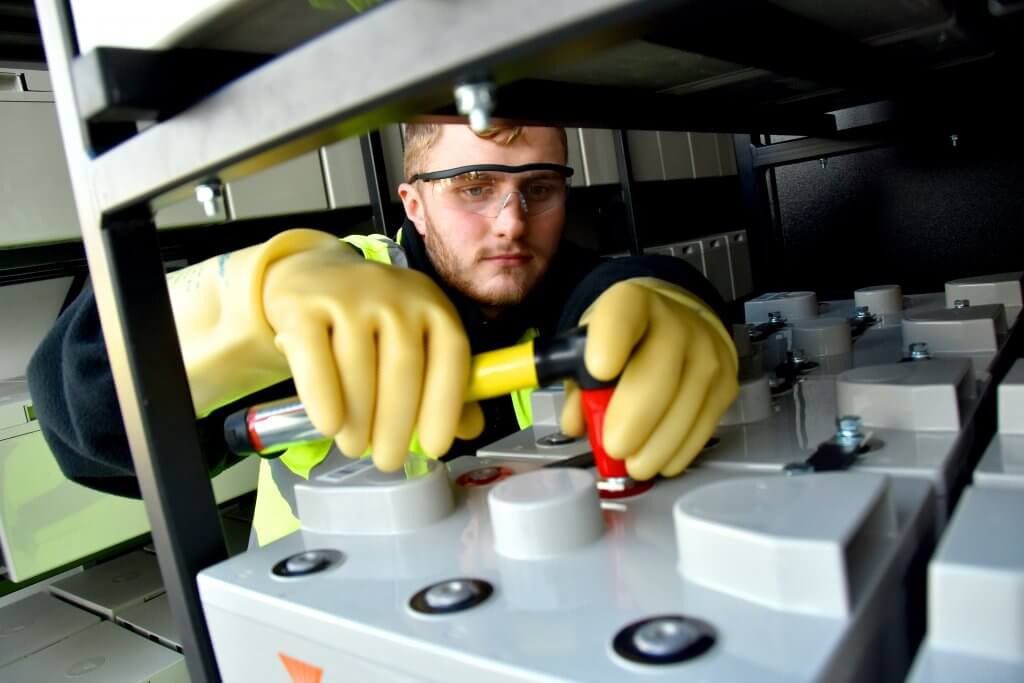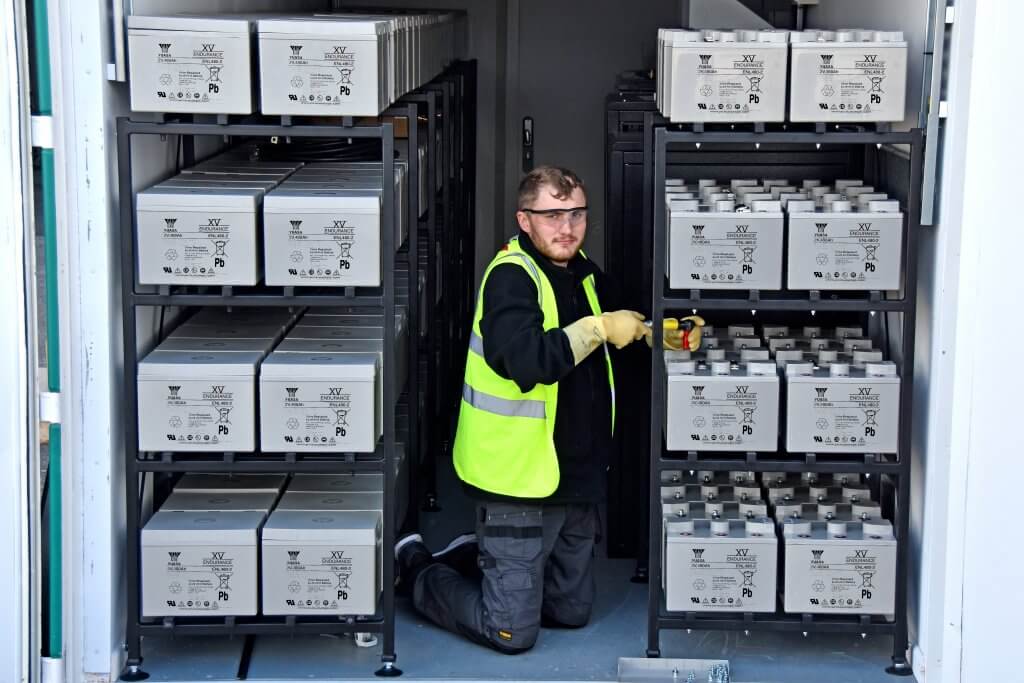
CBI has invited GS Yuasa, a global battery manufacturer, to join our guest blog series and share their contribution to an exciting project underway in the UK. The project, funded by the UK’s Research and Innovation agency, is using a dual-chemistry battery system to provide energy storage for Portsmouth International Port. Looking to achieve a net-zero carbon operation, the Port’s battery energy storage system will be able to charge electric vehicles using a solar-powered microgrid. For more examples of lead batteries in action in energy storage, check out CBI’s interactive map.
In a groundbreaking project combining both lead and lithium battery chemistries, Portsmouth International Port in the UK now has the capability to power electric vehicles at a green and cost-effective rate thanks to world-leading battery manufacturer, GS Yuasa. The goal of the project is to determine the best microgrid system set up utilizing these battery technologies.
With the system going live in October 2020, expert engineers successfully installed their industry leading lead and lithium-ion batteries into a cutting-edge dual chemical battery system, one of the first of its kind in the UK.
The system is a vital component of an integrated energy network that the Port is developing as part of its transition to net-zero carbon operation. The latest step in this green energy transition is a project funded by Innovate UK, the Research and Innovation agency of the UK Government, called Port Energy System Optimisation (PESO).
The EV charging station will provide charging for the Port’s industrial trucks and cars with the aim of extending the capacity to charge passenger EVs in the future. The project aims to evaluate the optimum component mix and control architecture for a microgrid within the port and its interaction with external networks.

Energy storage is a crucial element of microgrids. The dual chemistry energy storage system is produced by GS Yuasa and was first trialed in 2018. The PESO project is a great opportunity to expand on the development of this unique configuration. GS Yuasa is a leading global manufacturer of both lead and lithium-ion batteries, recognizing the synergy that can be obtained when both are used in combination for energy storage applications. The Portsmouth system combines valve regulated lead batteries (VRLA) and lithium-ion (LiB) cells connected in parallel to a common DC bus feeding a single AC-DC power conversion system (PCS).
The direct connection brings significant cost reduction by the elimination of PCS units and energy management system complexity. The system consists of 240 cells ENL480-2 volt VRLA cells, made in GS Yuasa’s manufacturing facility in Ebbw Vale, Wales. The lithium element comes in parallel with 3 strings each containing 144 cells LIM50EL LiB cells, made in Japan. The system can discharge for 2 hours at full power, or with extended energy output at lower powers.

In this configuration, the LiB components provide all of the energy output while the battery is in high state of charge. This plays to the high cycling and power capability of the LiB cells. The larger capacity VRLA component provides less frequent, longer-term cycling which is needed for renewable energy capture from the large PV arrays that will be deployed in the port and close by.
A particularly useful area of the direct paralleling is that the round trip efficiency (RTE) of storage is much higher than for hybrid systems. VRLA batteries require several hours of final charging at low power. The efficiency of the PCS drops significantly in this period. With direct paralleling all charging can be made at optimum power for PCS efficiency. The transfer of small charging currents from LiB to VRLA, needed to complete the charging of the latter, even continues while the LIB is discharging into the PCS for another cycle.

This fusion of battery technologies takes advantage of the strengths of each chemistry and combines them to deliver the best energy storage system for the project. As demand for clean, renewable energy storage continues to grow exponentially across the globe, the need for all types of batteries to achieve a low carbon future will be crucial.
To find out more about GS Yuasa, their products and the PESO project visit www.yuasa.com
